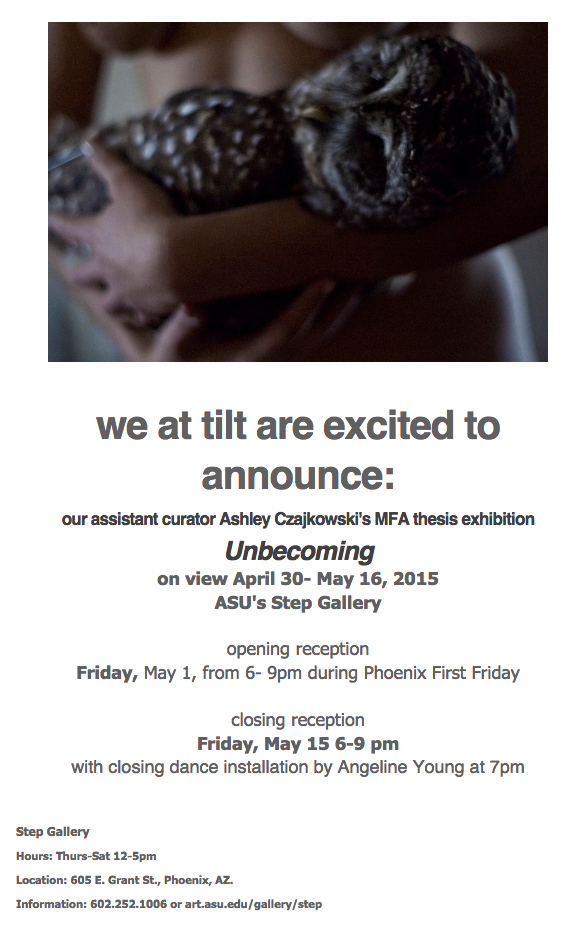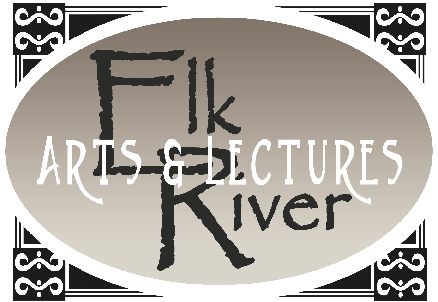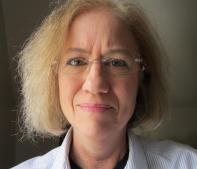Month: April 2015
SR Pod/Vod Series: Poet Muriel Nelson
Each Tuesday we feature audio or video of an SR Contributor reading their work. Today we’re proud to feature a podcast by Muriel Nelson.
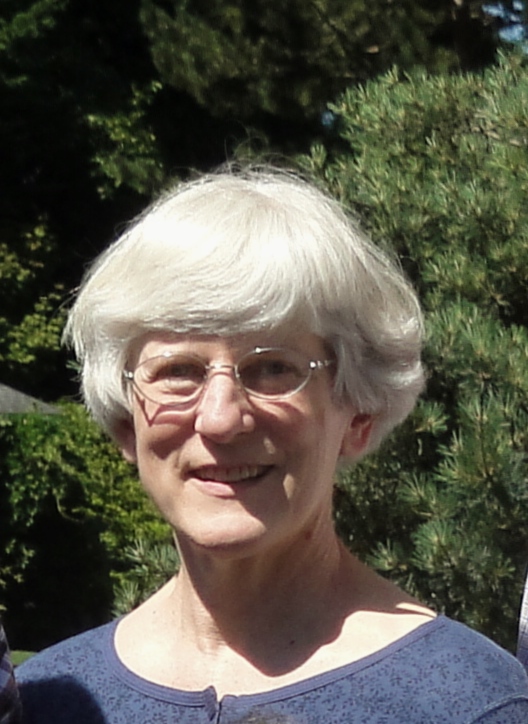 Muriel Nelson’s publications include Part Song, winner of the Dorothy Brunsman Poetry Prize (Bear Star Press), and Most Wanted, winner of the ByLine Chapbook Award (ByLine Press). Nominated four times for the Pushcart Prize, her poems have appeared in Beloit Poetry Journal, Four Way Review, Front Porch Journal, Hunger Mountain, National Poetry Review, The New Republic, Northwest Review, Ploughshares, Prairie Schooner, and Superstition Review, and on Verse Daily and Poetry Daily. Italian Culture published her critical essay on Eugenio Montale. She holds master’s degrees from the Warren Wilson MFA Program for Writers and the University of Illinois School of Music.
Muriel Nelson’s publications include Part Song, winner of the Dorothy Brunsman Poetry Prize (Bear Star Press), and Most Wanted, winner of the ByLine Chapbook Award (ByLine Press). Nominated four times for the Pushcart Prize, her poems have appeared in Beloit Poetry Journal, Four Way Review, Front Porch Journal, Hunger Mountain, National Poetry Review, The New Republic, Northwest Review, Ploughshares, Prairie Schooner, and Superstition Review, and on Verse Daily and Poetry Daily. Italian Culture published her critical essay on Eugenio Montale. She holds master’s degrees from the Warren Wilson MFA Program for Writers and the University of Illinois School of Music.
You can listen to the podcast on our iTunes Channel.
You can read along with the work in Superstition Review.
Elk River Arts & Lectures hosts the 2015 Elk River Writer’s Workshop
Elk River Arts & Lectures will take applications beginning Wednesday, April 1, for its 2015 writer’s workshop. The workshop will take place October 22-25, at historic Chico Hot Springs Resort tucked between the Absaroka Mountains and Yellowstone River in Montana’s spectacular Paradise Valley, just north of Yellowstone National Park.
The workshop will feature on its faculty a full slate of eminent Western writers including novelists Rick Bass and William Kittredge, famed ghostwriter Maryanne Vollers, naturalist Doug Peacock, and poets Pamela Uschuk, William Pitt Root. Evening lecturers include award-winning adventure writer Tim Cahill, novelist Kevin Canty and author/screenwriter William “Gatz” Hjortsberg.
Students will have the opportunity to work in a small group environment with all faculty members during intensive writing seminars over the course of the four-day workshop. The weekend culminates with a gala faculty reading in Livingston.
To learn more or apply for the workshop, visit the workshop website: elkriverwriters.org, or email director Elise Atchison at ERALdirector@gmail.com.
Elk River Arts & Lectures is a non-profit organization that seeks to bring writers to south-central Montana for free public readings, and also to provide opportunities for those writers to interact with local public school students. Previous lecturers have included Terry Tempest Williams, Pam Houston, Scott Carrier, David Barsamian, Henry Real Bird and Mary Clearman Blew, among others. More information is available at elkriverarts.org.
Guest Post, Eric Maroney: The Limited, Forever Dying Thing
After the tube was removed from my neck, I was allowed to leave the plastic-wrapped room, and the stitches in my neck were pulled. Then I started to seriously write. This is what happened:
At twenty-nine, after my bout with cancer, I had yet to realize that I had made two real enemies, and that writing would become an effective weapon against both of them. To learn this, I had to pay an extreme price.
Both cancer and time became my interlocking adversaries, each feeding the other’s vitality. Cancer was the disease, and time was the stark marker of its strength. Time was being given a growing status by the cancer in my body. They had both grown together, and now seemed interlocked for their mutual benefit and my singular destruction.
But I didn’t know it right away. At first, there was no awareness, and a kind of frozen dumbness settled over me. Only after that lifted was I tossed down a deep well of obscure emotion built by the combined effects of cancer and time assuming the mutual power of a married couple. At first, cancer seemed the dominant partner, intent on robbing me of all I had left. But as my impassiveness wore off, I began to treat time as the more powerful and valuable partner — a precious commodity whose supply is easily stripped. So time gradually became Time, pronounced with a great deal of heft.
First, I made numerous errors in judgment. In response to cancer, I made many attempts to dull the hurt, which only short-circuited any constructive responses to the challenge. For a while, making mistakes was easier than forming any valuable response to cancer, time, and death. And this went on long after the tube was removed from my neck and I was allowed to leave the toxic room. It went on for so long, in fact, that I did not realize that the physical fight between cancer and me was really over, and that the far more difficult mental battle had begun.
I was not prepared for the pervasive influence of the idea of cancer. The idea of the disease loomed larger than any physical disorder. Its influence was pervasive, and trapped my mind in a mechanical set of fixations that were hard to defeat. And I had underestimated how my sense of disease, of cancer, of the element of time, had radically and forever changed me. In the fight against the idea of the disease, I paid steep prices for miscalculating my foe.
But eventually, something odd happened. After many years, fissures developed in the marriage of cancer and time. For those who fight cancer and then survive for many years, the disease and its grotesque ideas and associations begin to wane. What remains is the idea of Time as a narrow reserve. After this realization, Time becomes an open accusation. What are you doing with this limited, forever-dying thing?
From the wreck of it all — from the shambles of my bad decisions and missteps in the years after cancer — writing emerged and surpassed the disease. In fact, cancer and time eventually effectively divorced, and time found a new partner in writing (along with a turn toward Judaism and God, and a deep commitment to family, which are topics for another essay). Writing became the handmaid of time in as powerful a way as time had once been the spouse of cancer. Although time can never be conquered, writing has a curious way of arresting its flashes. Time, with its broad shoulders and colossal dimensions, can only be captured and tamed in snatches and bits. Writing doesn’t stop its passage, or retard our progress toward death, but it does create markers of time’s weaknesses and flaws. Its flow can be temporarily diverted by writing, which when done well, can capture elements of our experience which are as close to timeless as people can approach.
For me, writing is one of the few adequate responses to our time-bound nature. Of course one can’t achieve eternity even in the best of writing — but with effort, care, and dedication, we can find a glimmer of time without end within ourselves in the mirror of words. The fact that the glimmer is only a meager spark only speaks to the delicate and privileged nature of recognizing that eternity.
SR Pod/Vod Series: Poet Meg Johnson
Each Tuesday we feature audio or video of an SR Contributor reading their work. Today we’re proud to feature a podcast by Meg Johnson.
 Meg Johnson is the author of the full length poetry collection Inappropriate Sleepover (The National Poetry Review Press, 2014) which was recently a NewPages Editor’s Pick. Her poems have appeared in Hobart, Nashville Review, The Puritan, Sugar House Review, Verse Daily, and others. Meg started dancing at a young age and worked professionally in the performing arts for many years. She is the editor of Dressing Room Poetry Journal and recently received her MFA in creative writing from the NEOMFA Program. Meg is currently a lecturer at Iowa State University.
Meg Johnson is the author of the full length poetry collection Inappropriate Sleepover (The National Poetry Review Press, 2014) which was recently a NewPages Editor’s Pick. Her poems have appeared in Hobart, Nashville Review, The Puritan, Sugar House Review, Verse Daily, and others. Meg started dancing at a young age and worked professionally in the performing arts for many years. She is the editor of Dressing Room Poetry Journal and recently received her MFA in creative writing from the NEOMFA Program. Meg is currently a lecturer at Iowa State University.
Her website is: megjohnson.org
she blogs at: megjohnsonmegjohnson.
You can listen to the podcast on our iTunes Channel.
You can read along with the work in Superstition Review.
Jen Bervin Talk on The Gorgeous Nothings: Emily Dickinson’s Envelope Poems
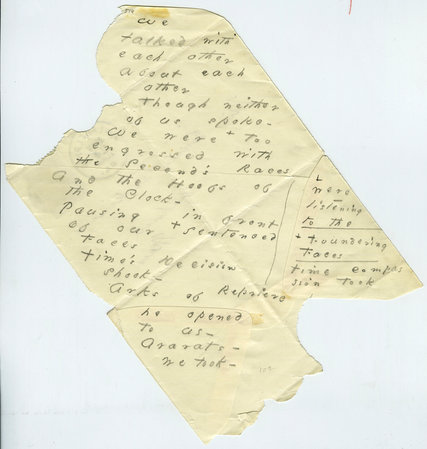 The University of Arizona Poetry Center and the Phoenix Art Museum present:
The University of Arizona Poetry Center and the Phoenix Art Museum present:
Artist’s Talk from Jen Bervin, co-editor of The Gorgeous Nothings: Emily Dickinson’s Envelope Poems, which was recognized as a 2013 best book of the year by The New Yorker and Times Literary Supplement.
This event is FREE and will be followed by a Q & A, with books available for purchase. Learn more at poetry.arizona.edu or phxart.org.
Date: Friday, May 1, 7:00 PM
Location: The Phoenix Art Museum, 1625 N. Central Ave, Phoenix, Arizona
The book is printed in a facsimile edition, and the poems are unique–each is composed on the flap of an envelope. You can learn more about the book in the NYTimes review and New Yorker pieces below:
http://www.newyorker.com/magazine/2014/01/27/back-of-the-envelope
For even more information you can check out these links to reviews on the book:
NPR: “Readers always seem to want to get to closer to Emily Dickinson, the godmother of American poetry. Paging through her poems feels like burrowing nose-deep in her 19th century backyard – where ‘the grass divides as with a comb,’ as she writes in…”
http://www.npr.org/2013/11/30/247496393/emily-dickinson-envelope-writings-gorgeous-poetry-in-3-d
An essay response in Jacket2: “‘The world will not rest satisfied,’ wrote a reviewer of Emily Dickinson’s poems in 1982, ’till every scrap of writings, letters as well as literature, has been published.’ Here is how The Gorgeous Nothings, a provocation, satisfies…”
http://jacket2.org/reviews/light
LA Times: “In 2012, a daguerreotype surfaced that was thought to be of a midlife Emily Dickinson, causing an Internet frenzy. As far as we (the frenzied) knew, there was only one known…”
http://articles.latimes.com/2013/nov/21/entertainment/la-ca-jc-emily-dickinson-20131124
New Republic: “It turns out that for a not insignificant fee, literary museums and author’s homes will often let guests handle the artifacts, materials, and manuscripts of long-deceased writers. On a chilly, windblown visit to…”
http://newrepublic.com/article/115452/gorgeous-nothings-emily-dickinson-envelope-writings
Guest Post, Elane Johnson: Criminally Bad Grammar
Okay. I admit it. Sometimes…sometimes, I want to be a real-life version of Cameron Diaz in the only funny 15 seconds of the hideously horrible movie, Bad Teacher, and mark up my students’ papers in huge, red profanity. I mean, come on! Somebody show me a college or university that allows texting language in academic writing…although with the dumbing-down of our educational system, I’m sure that sooner or later, some brilliant “educator” will suggest that we bend the rules to accept texting slang “to meet students where they are.” I will die.
I love my students, and I am more than happy to contort myself to help them, but I draw the line at accepting lower case “i” for the personal pronoun. I mean it. If I see that lower case “i.” One. More. Time. My big, red “What THE?!” is going to be scrawled in student blood. (JK.)
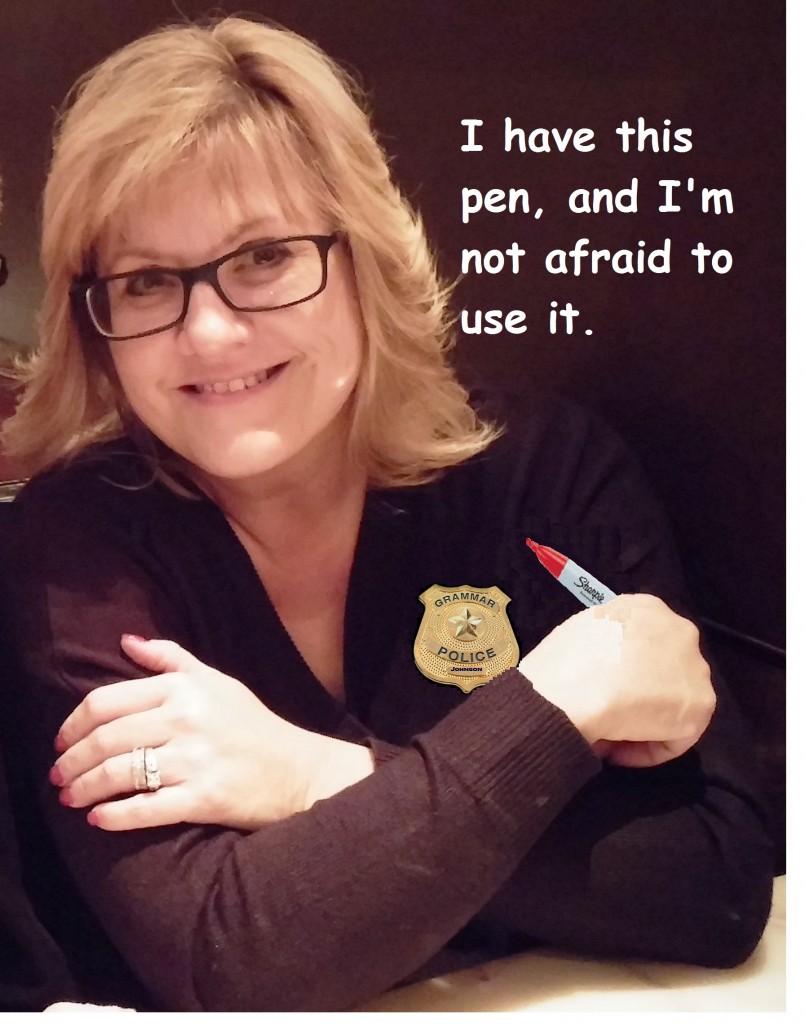 Although I am the Chief of the Grammar Police, I’m way too polite to kill anyone for stabbing me in the brain with grammatical gaffes even if it is clearly self-defense. Plus, I’d go to prison, and I just look like death in orange. For some grammar offenses, anyway, there will never be justice because it’s nearly impossible to teach 12 years of grammar in 12 weeks. (And…Autocorrect. Ohhhhh, that Godforsaken Autocorrect. If you rely on your telephone for correct spelling, and then you end up telling your grandmother that you really enjoyed her vagina instead of her lasagna, well, don’t say I didn’t warn you.) Standards are slipping because in addition to texting, an epidemic of non-reading threatens all that I hold holy.
Although I am the Chief of the Grammar Police, I’m way too polite to kill anyone for stabbing me in the brain with grammatical gaffes even if it is clearly self-defense. Plus, I’d go to prison, and I just look like death in orange. For some grammar offenses, anyway, there will never be justice because it’s nearly impossible to teach 12 years of grammar in 12 weeks. (And…Autocorrect. Ohhhhh, that Godforsaken Autocorrect. If you rely on your telephone for correct spelling, and then you end up telling your grandmother that you really enjoyed her vagina instead of her lasagna, well, don’t say I didn’t warn you.) Standards are slipping because in addition to texting, an epidemic of non-reading threatens all that I hold holy.
Scientific data from some study blah, blah, blah shows that people have a much larger auditory/speaking vocabulary than their reading vocabulary, which is then larger than their writing vocabulary. That means that people learn most of their words from hearing them, so recognizing many words in print or actually writing them proves to be a challenge. As a result, we English teachers encounter things like this: “My goals is to keep up with the paste”, “I want to past this class“, “I have to deal with stuff on a daily basics”, “This class really peeped my interest“, “So I will keep trying until I get it down pack” and “You can do anything that you put your mine to.”
Annnnnnd, my soul just died.
However, as the Grammar Police Chief, it is my duty to restore peace and harmony to the writing community. If I train my blinding spotlight on these 7 common offenses, perhaps the community will pull together and eradicate these blights. A girl can dream.
1.) Plural nouns are not formed with an apostrophe and “s.” Really. I mean it.
If you can read this, and you think it is correct, you had maybe not so great teacher’s. (Evillllllll!)
If you can read this, thank your excellent teachers. (Ahhhhhh!)
2.) Definitely is definitely not spelled defiantly.
3.) If you start in past tense, for the love of God, you must stay in past tense. (Or vice versa.)
Yesterday, we were in the Wal Mart parking lot, when this guy comes up and starts yelling at me for no reason. (Gaaaacckkkk!!!)
**Special note: If you cannot locate the shift in tense, please just go ahead and stop reading. You’re done.
4.) When the antecedent (the noun for which a pronoun “stands in”) is singular, you must use a singular pronoun. And for the last time, their is not a singular pronoun.
Anyone who leaves their dog at the kennel after hours will need to call Dan’s Express Pet Crematorium and Super Hibachi Buffet. (Nooooooo!!!)
Anyone who leaves his/her dog at the kennel after hours will need to call Dan’s Express Pet Crematorium and Super Hibachi Buffet. (Yessssssss!!!)
5.) Internet should be capitalized. What is the aversion to an upper case “I”?? Sheesh.
6.) The objective case of a personal pronoun (me, her, him, us, them, you, it) receives the action of a verb or acts as the object of a preposition.
Mother baked a cake for Sally and I. (No, no, no, no, no)
Mother slapped Sally and I. (No, no, no, no, no)
Mother did NOT bake a cake for “I”! She baked a freaking cake for me. For me! ME, dammit! And, she didn’t slap “I” either. She slapped m… But, I’d rather not talk about that. Look, I know some well-meaning first grade teacher told you that it’s always “so-and-so and I,” but she lied. She also told you that the classroom hamster went to live on a nice farm, and you fell for that too! So, stop it. Just stop it.
7.) And, finally, believe it or not: formatting dialogue has rules! Those little quotation mark thingies do more than just look like tiny eyelashes. They go around the actual words that someone speaks so that readers will know the actual words that someone speaks. But, really, this is a topic for another day…
SR Pod/Vod Series: Poet Les Kay
Each Tuesday 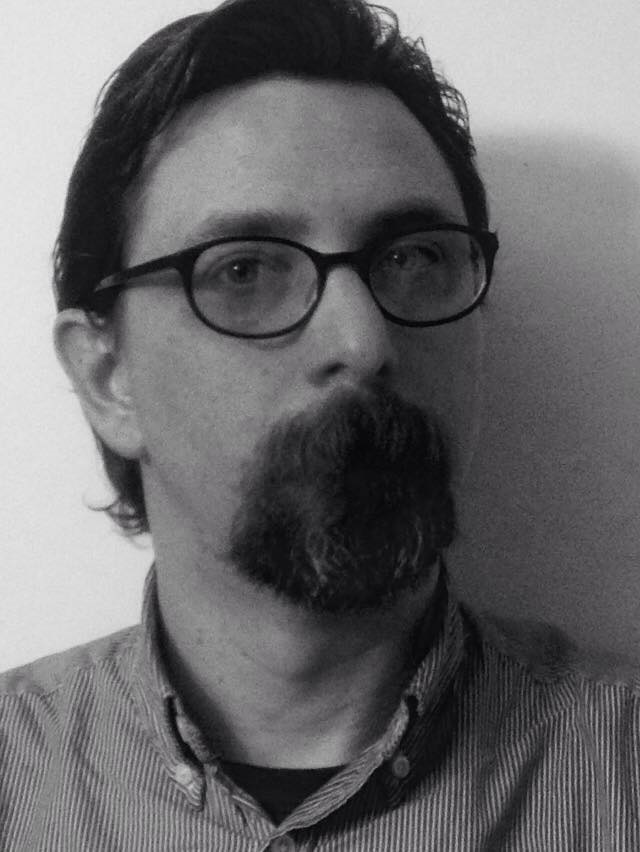 we feature audio or video of an SR Contributor reading their work.
we feature audio or video of an SR Contributor reading their work.
Today we’re proud to feature a podcast by Les Kay.
Les Kay holds a PhD from the University of Cincinnati’s Creative Writing program. His first chapbook, The Bureau, is forthcoming from Sundress Publications in 2015. His poetry has recently appeared or is forthcoming in a variety of literary journals including The McNeese Review, Redactions, Up the Staircase Quarterly, Wherewithal, Borderlands: Texas Poetry Review, Southern Humanities Review, Whiskey Island, and Sugar House Review.
You can listen to the podcast on our iTunes Channel.
You can read along with the work in Superstition Review.
Post Road 28 Is Now Available
“Post Road maps the way to the freshest and funkiest literary territories , fusing eclectic elements into something whole and wholly new.”
ELIZABETH SEARLE
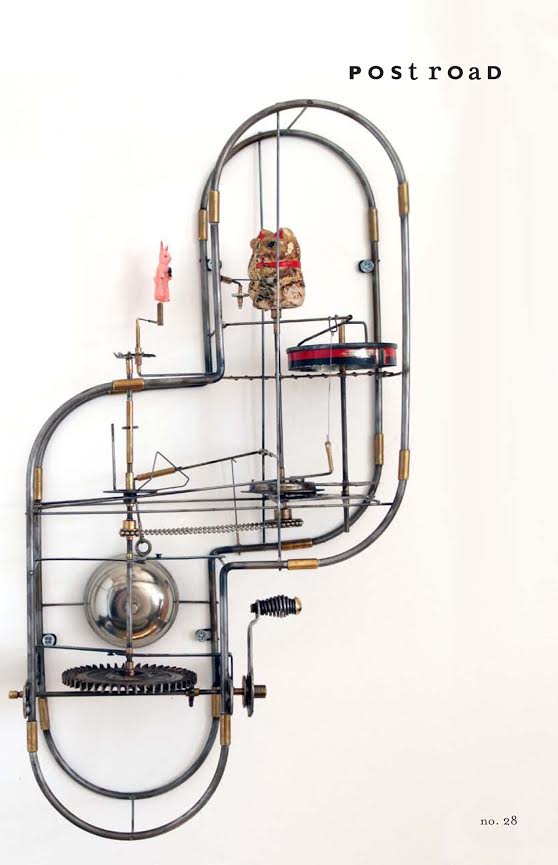 Post Road 28 is now available!
Post Road 28 is now available!
Issue 28 features a selection of broadside poems from Will Dowd, a critical essay of Chris Ware from Zak Breckenridge, a Guest Folio edited by Robert Chibka which includes fiction from Simon Savelyev, Kate McMahon, Caitlin Keefe Moran and Ricco Villanueva Siasoco, and much more. Order present and past issues online at www.postroadmag.org.
We are currently reading for our next spring issue. We accept a wide range of genres including poetry, fiction, nonfiction, theatre and art. If you have work you would like to share with us, now is the time! For more information on submissions guidelines, please visit our website.
Finally, Post Road will be trekking out to AWP in Minneapolis this month. If you’re planning to attend, we would love to see you at our table, talk all things Post Road, and maybe even convince you to take home an issue (or two!). For more information on what’s brewing in our home office and any shenanigans we may plan for AWP, you can follow us on Twitter @Post Road or find us on Facebook.
Cover art: “Saga #2” Gina Kamentsky
SR Pod/Vod Series: Poet Priscilla Atkins
Each Tuesday we feature audio or video of an SR Contributor reading their work. Today we’re proud to feature a podcast by Priscilla Atkins
Priscilla Atkins lives in Holland, Michigan and has a collection, The Café´of Our Departure, forthcoming from Sibling Rivalry Press in March 2015.
You can listen to the podcast on our iTunes Channel.
You can read along with the work in Superstition Review.
